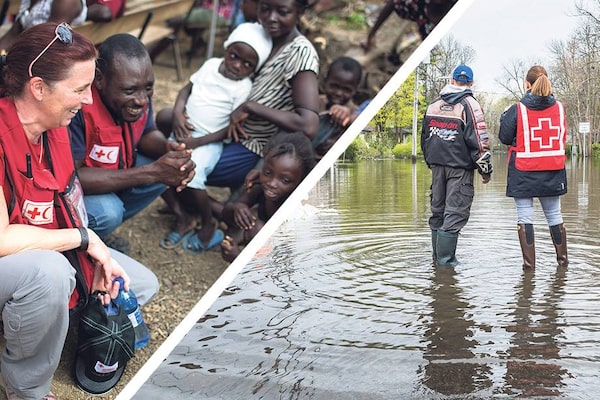
Left: The Canadian Red Cross ERU mobile clinic was the first humanitarian assistance to reach this community in Haiti following Hurricane Matthew. Right: The Red Cross shares a helping hand in crisis situations in Canada.
Here in Canada and overseas, the Red Cross stands ready to help people before, during and after a disaster.
These statistics illustrate the work of the Red Cross in Canada:
• Every three hours, the Red Cross helps a Canadian after a disaster. In cities and towns from coast to coast, the disaster response teams are called to the scene of disaster. Not a single day goes by without a Canadian turning to the Red Cross for help in the wake of an insurmountable challenge. In the average year, the Red Cross provides critical help to more than 40,000 Canadians in disaster situations.
• The Canadian Red Cross has a countrywide network of more than 5,000 highly trained responders, both staff and volunteers. In the event of a large disaster, such as the Fort McMurray fire and the B.C. fires, the Red Cross has the capacity to mobilize its people from coast to coast. And with its integrated supply chain and logistics system, it can scale up to provide direct services to up to 100,000 people at once.
Internationally, the Red Cross is active around the world as it helps vulnerable people.
• The Red Cross Emergency Response Unit Field Hospital can be deployed anywhere in the world within 48 hours. Once on the ground, the unit can be operational within 12 hours and self-sufficient for a month. It can remain in-country for up to four months.
• The life-saving work of the Red Cross focused on women's and children's health has reached more than 13 million vulnerable people in 24 countries across the Americas, Africa and Asia over the past decade.
This content was produced by Randall Anthony Communications, in partnership with The Globe and Mail's advertising department. The Globe's editorial department was not involved in its creation.